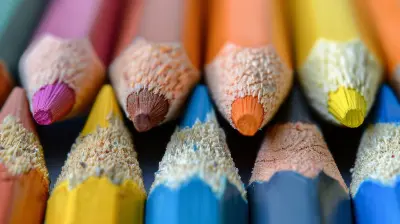How to Use Social Media to Foster Student Engagement
11 June 2025
Social media isn’t just about viral dance challenges, memes, and endless scrolling. It can also be a powerful tool in the classroom! With the right approach, educators can use social media to boost student engagement, encourage collaboration, and create a more interactive learning environment. But how exactly do you make that happen without it turning into a distraction? Let’s dive in! 
Why Social Media Matters in Education
Think about it—students live on social media. Whether it’s Instagram, TikTok, Twitter, or Facebook, they’re constantly checking their feeds. So, why not tap into that energy for learning? Instead of fighting against the screens, educators can use them to enhance lessons, promote discussion, and connect students in new ways.Social media offers:
- Instant communication: Students can interact with teachers and peers beyond the classroom.
- A sense of community: It fosters collaboration and teamwork.
- Engaging content: Videos, infographics, and interactive posts make learning more dynamic.
- Real-world applications: Social media helps students see the relevance of their studies in everyday life.
Now, let’s break down some effective ways to use social media for student engagement. 
1. Create a Class Facebook or Instagram Page
A dedicated class page is a fantastic way to share updates, resources, and important information. Students can check the page for reminders, homework assignments, and supplementary materials.How to Make It Work:
- Post daily or weekly updates about upcoming lessons and tasks.- Share relevant educational videos, articles, and images.
- Encourage students to contribute by posting questions or discussion topics.
- Use Instagram Stories or Facebook Live for quick Q&A sessions.
This keeps students plugged into the class in a way that feels familiar and fun! 
2. Encourage Discussions with Twitter and X (Formerly Twitter)
Twitter (or X) is perfect for quick discussions, debates, and sharing ideas in real time. With the character limit, students must get straight to the point, which is great for honing communication skills.How to Make It Work:
- Create a unique class hashtag (e.g., #MrSmithsHistory) for discussions.- Post a weekly question and ask students to respond.
- Encourage students to follow and engage with thought leaders in their subject areas.
- Use Twitter polls to gauge understanding or spark debates.
This strategy not only fosters engagement but also teaches students how to express their thoughts concisely. 
3. Use YouTube for Interactive Learning
Let’s be honest—students love videos. So, why not use YouTube to your advantage? Whether you’re creating your own videos or curating a playlist of relevant educational content, YouTube can be a game-changer.How to Make It Work:
- Record short video lessons and upload them to a class YouTube channel.- Ask students to create their own educational videos on a topic.
- Host live-streamed Q&A sessions or guest lectures.
- Share engaging playlists related to the subject matter.
When students see their teacher embracing digital tools, they’re more likely to stay engaged.
4. Utilize TikTok for Micro-Learning
TikTok isn’t just for dancing—it’s also an amazing platform for bite-sized learning! Educational TikToks are trending, and many teachers are using them to deliver short, engaging lessons.How to Make It Work:
- Create short, fun explainer videos on key concepts.- Challenge students to make their own educational TikToks.
- Use TikTok Duets to respond to student questions.
- Share “Did You Know?” facts to spark curiosity.
By meeting students where they already are, learning becomes more seamless and enjoyable.
5. Start a Classroom Blog or LinkedIn Group
If you want students to engage in deeper discussions, consider using blogging or LinkedIn. A class blog allows students to practice writing and critical thinking, while LinkedIn helps them build professional skills.How to Make It Work:
- Assign students to write blog posts on what they’ve learned.- Encourage peer reviews and discussions in the comment section.
- Use LinkedIn to teach networking and professional communication.
- Feature a "Student of the Month" for motivation.
This not only boosts engagement but also helps students develop essential writing and networking skills.
6. Host Live Q&A Sessions on Instagram or Facebook Live
Sometimes, students hesitate to ask questions in class. Live Q&A sessions on social media give them a chance to engage in a more relaxed setting.How to Make It Work:
- Schedule weekly or monthly live sessions for student questions.- Guest speakers can join to share expertise.
- Allow anonymous questions for students who are shy.
- Review exam concepts before tests.
Students are more likely to participate when they feel comfortable, and social media provides that space.
7. Use Pinterest for Collaborative Study Boards
Pinterest is a fantastic tool for organizing study materials in a visually appealing way. Teachers and students can collaborate on boards filled with study guides, diagrams, and reference materials.How to Make It Work:
- Create different boards for each subject or topic.- Allow students to pin useful resources.
- Organize infographics, flashcards, and cheat sheets.
- Pin motivational content to keep students inspired.
This method helps students visualize information, making studying more effective.
8. Gamify Learning with Social Media Challenges
Who doesn’t love a good challenge? Turning lessons into social media challenges adds a fun, competitive element to learning.How to Make It Work:
- Start a #30DayLearningChallenge where students post something they’ve learned each day.- Create quizzes or trivia challenges on Instagram Stories.
- Reward students for engagement with digital badges or small prizes.
- Use Kahoot! or Quizizz competitions and let students share results.
By adding a gamified touch, learning feels more like a fun experience rather than just schoolwork.
9. Collaborative Learning through WhatsApp or Discord
Group chats aren’t just for personal conversations—they can be great for collaborative learning, too. WhatsApp and Discord provide structured yet casual spaces for students to ask questions, share notes, and discuss coursework.How to Make It Work:
- Create a group for each class where students can ask and answer questions.- Share resources like PDFs, links, and voice notes.
- Offer "office hours" where educators respond to queries.
- Use Discord’s voice channels for study groups.
Having an informal communication channel makes learning more accessible and less intimidating.
10. Promote Digital Citizenship and Responsible Social Media Use
Teaching students how to use social media responsibly is just as important as engaging them. Educators should guide students in developing positive online behaviors.How to Make It Work:
- Discuss online etiquette and respectful communication.- Teach students about fact-checking and avoiding misinformation.
- Set boundaries for appropriate social media use in the classroom.
- Encourage students to use social media for good—like spreading awareness about important topics.
By incorporating digital citizenship lessons, students learn valuable life skills alongside their academic knowledge.
Final Thoughts
Social media is here to stay, and instead of banning it, educators can embrace it as a powerful learning tool. When used the right way, platforms like Instagram, Twitter, YouTube, and TikTok can make lessons more interactive, creative, and engaging.It’s all about meeting students where they are and turning their favorite apps into valuable educational resources. So, if you’re an educator looking to boost student engagement, why not start weaving social media into your teaching strategy? You might be surprised at just how effective it can be!
all images in this post were generated using AI tools
Category:
Student EngagementAuthor:

Zoe McKay
Discussion
rate this article
2 comments
Rocco McClain
This article offers insightful strategies for leveraging social media to enhance student engagement. By fostering interaction and community, educators can create dynamic learning environments that resonate with today's digital learners.
June 23, 2025 at 10:18 AM

Zoe McKay
Thank you for your thoughtful comment! I'm glad you found the strategies helpful for enhancing student engagement through social media. Engaging today's learners is crucial, and fostering a vibrant community is key.
Berenice Rhodes
Great insights! Leveraging social media for student engagement is a powerful approach. It not only fosters a sense of community but also encourages collaboration and creativity. Embracing these tools can significantly enhance the learning experience. Excited to see how educators implement these strategies!
June 23, 2025 at 4:19 AM

Zoe McKay
Thank you! I'm glad you found the insights valuable. I’m excited to see how educators harness these tools to enrich student engagement!


